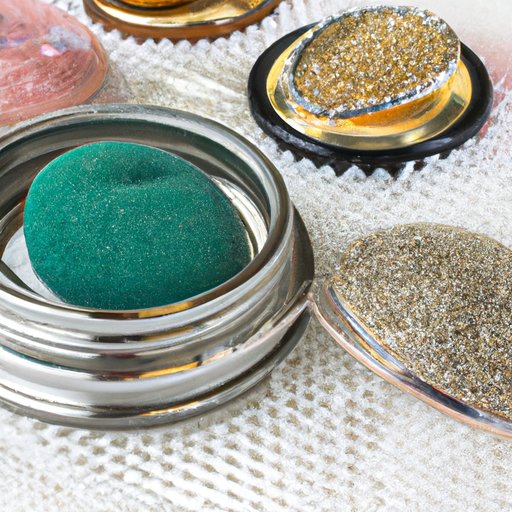Introduction
Jewelry is a popular accessory for many people, but it can be vulnerable to tarnishing. Tarnishing occurs when the metal of the jewelry reacts with the elements in the air, causing a black or brown discoloration on the surface of the jewelry. Fortunately, there are a few simple steps you can take to prevent your jewelry from tarnishing. This article will explore how to keep jewelry from tarnishing by discussing the benefits of storing jewelry in an airtight container, avoiding humid conditions, and applying a protective coating to jewelry.
Store Jewelry in an Airtight Container
One of the best ways to keep jewelry from tarnishing is to store it in an airtight container. Airtight containers will help protect the jewelry from moisture and oxygen, which are two of the main causes of tarnishing. Additionally, airtight containers will help keep the jewelry free of dust and dirt, which can also cause tarnishing over time.
There are a variety of airtight containers available, including plastic bags, glass jars, and special jewelry boxes. When choosing an airtight container, make sure it is large enough to accommodate all of your jewelry and that it is made of a material that won’t react with the metal of the jewelry. Additionally, look for containers with tight-fitting lids to ensure that the airtight seal is secure.
When storing jewelry in an airtight container, it’s important to keep a few things in mind. First, make sure to separate the pieces of jewelry to avoid scratching and tangling. Second, use cotton balls or other soft materials to cushion the jewelry and prevent it from rattling around in the container. Finally, make sure to inspect the jewelry regularly for any signs of damage or tarnishing.

Avoid Wearing Jewelry in Humid Conditions
Another way to keep jewelry from tarnishing is to avoid wearing it in humid conditions. Humidity can cause the metal of the jewelry to corrode, leading to tarnishing. Additionally, humidity can create an ideal environment for bacteria and mold to grow, which can also cause tarnishing.
To avoid wearing jewelry in humid conditions, try to limit your exposure to environments with high levels of moisture. If you plan to go swimming or spend time in a hot and humid climate, it’s best to remove your jewelry beforehand. Additionally, it’s best to avoid storing your jewelry in bathrooms or other damp areas of the house.
Clean Jewelry Regularly
In addition to storing jewelry in an airtight container and avoiding humid conditions, it’s important to clean your jewelry regularly. Regular cleaning will help remove dirt and oils that can accumulate on the surface of the jewelry and lead to tarnishing. Additionally, regular cleaning will help maintain the shine and luster of the jewelry.
When cleaning jewelry, it’s important to choose the right type of cleaner. Depending on the type of jewelry, you may need to use a specialized jewelry cleaner or a mild soap and water solution. Additionally, some jewelry should not be cleaned with harsh chemicals or abrasives, so it’s important to check the manufacturer’s instructions before beginning.
When cleaning jewelry, it’s important to use the right tools. Soft bristled brushes are best for removing dirt and debris, while soft cloths are better for buffing and polishing. Additionally, it’s important to rinse the jewelry thoroughly after cleaning to remove any residue.

Use a Jewelry Polishing Cloth
In addition to cleaning jewelry regularly, it’s also important to use a jewelry polishing cloth. Jewelry polishing cloths are designed to remove light tarnish and restore the shine and luster of the jewelry. Additionally, jewelry polishing cloths are gentle enough to use on most types of jewelry without damaging the metal.
When using a jewelry polishing cloth, it’s important to choose the right type of cloth. Most jewelry stores carry polishing cloths specifically designed for different types of jewelry, such as gold, silver, and platinum. Additionally, it’s important to follow the instructions on the package and avoid using too much pressure when polishing the jewelry.

Apply a Protective Coating to Jewelry
Finally, one way to keep jewelry from tarnishing is to apply a protective coating. Protective coatings help create a barrier between the jewelry and the elements, which can help prevent tarnishing over time. Additionally, protective coatings can help keep the jewelry looking shiny and new for longer.
Most jewelry stores sell protective coatings specifically designed for different types of jewelry. It’s important to read the instructions carefully and follow them closely to ensure the coating is applied correctly. Additionally, it’s important to re-apply the coating periodically to maintain its effectiveness.
Conclusion
Tarnishing can significantly reduce the value of jewelry, so it’s important to take steps to prevent it. The best way to keep jewelry from tarnishing is to store it in an airtight container, avoid wearing it in humid conditions, clean it regularly, use a jewelry polishing cloth, and apply a protective coating. By following these steps, you can help ensure that your jewelry stays beautiful and tarnish-free for years to come.


